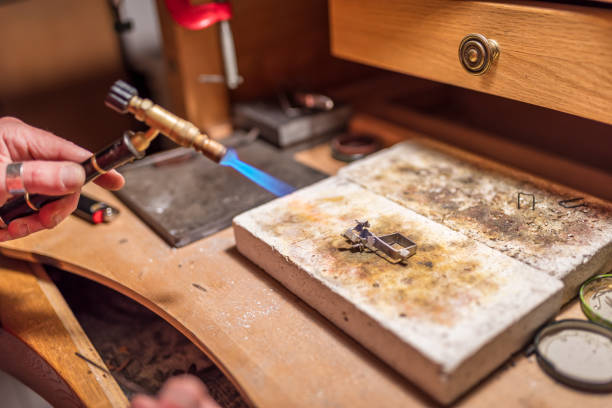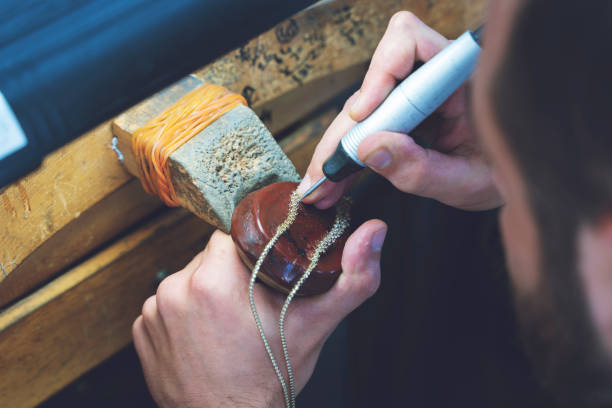Brass items are known for their ability to add a touch of elegance and class to any setting. However, over time, brass can become tarnished, losing its luster and aesthetic appeal. Cleaning tarnished brass not only restores its shine but also prolongs its life. In this article, we will explore various methods for cleaning tarnished brass effectively.
Identify the Type of Brass
Before starting the cleaning process, it’s imperative to identify the type of brass you have, as this will determine which cleaning methods are appropriate. Solid brass can endure more intensive cleaning techniques, while brass-plated items require gentler methods to avoid damaging the thin brass layer.
To identify the type of brass, use a magnet:
- If the magnet sticks, your item is likely brass-plated.
- If the magnet does not stick, it is probably solid brass.
Gather Your Materials
Successfully cleaning tarnished brass requires the right materials. Depending on the method you choose, your basic cleaning kit should include:
- Soft cloths
- Warm water
- Dish soap
- Lemon juice
- Baking soda or salt
- White vinegar
- Commercial brass cleaner (optional)
Having these items ready will make the cleaning process quicker and more efficient.
Method 1: Using Lemon and Baking Soda
Lemon juice and baking soda are excellent for cleaning brass, thanks to their natural acidity. Here’s a step-by-step guide:
- Cut a lemon in half and dip the cut side into baking soda.
- Rub the lemon directly onto the tarnished brass.
- Allow the mixture to sit for 5-10 minutes.
- Rinse the brass item with warm water.
- Dry thoroughly with a soft cloth.
This method is effective in removing moderate tarnish and restoring shine.
Method 2: Salt and Vinegar Solution
For tougher tarnish, a salt and vinegar solution can be used. Follow these steps:
- Mix equal parts white vinegar and salt in a bowl to form a paste.
- Apply the paste to the tarnished brass with a soft cloth or sponge.
- Let the paste sit on the brass for 15-30 minutes, depending on the level of tarnish.
- Scrub gently with a soft cloth or sponge.
- Rinse thoroughly with warm water and dry immediately.
This method is particularly effective for heavily tarnished brass items.

Method 3: Commercial Brass Cleaner
For those who prefer a more straightforward approach, commercial brass cleaners are available. These products are formulated to remove tarnish with minimal effort. To use a commercial brass cleaner:
- Apply the cleaner to a soft cloth.
- Rub the cloth on the tarnished brass, following the product instructions.
- Buff the brass to bring out its shine.
- Rinse if the product’s directions advise it.
- Dry immediately with a soft, clean cloth.
Commercial cleaners are convenient and effective, though they often contain chemicals, so use them in a well-ventilated area.
Conclusion
Cleaning tarnished brass can be a straightforward task if you have the right materials and methods. Whether you choose natural solutions like lemon and baking soda, or prefer commercial brass cleaners, the key is to handle your brass items with care to maintain their beauty and longevity. Identifying the type of brass and choosing the appropriate cleaning method will result in a dazzling finish that enhances your home’s decor.
FAQs
1. Can I clean brass with toothpaste?
Yes, regular white toothpaste can be used to clean brass. Apply a small amount on a soft cloth, rub it on the brass in circular motions, and then rinse thoroughly with warm water and dry.
2. How often should I clean my brass items?
For best results, clean your brass items every few months or as soon as they start to show signs of tarnish. Regular maintenance cleaning can prevent heavy tarnish from forming.
3. Is it safe to use ammonia to clean brass?
It’s generally not recommended to use ammonia on brass, especially brass-plated items, as it can be too harsh and may cause damage. Stick to gentler cleaning methods to extend the life of your brass.
4. How can I prevent brass from tarnishing?
To prevent tarnishing, store brass items in a dry, low-humidity environment, and apply a thin coat of lacquer or brass polish to protect the surface from oxidation.
5. Can I use olive oil to polish brass?
Olive oil can be used to give brass a final polish. After cleaning, apply a small amount of olive oil and buff with a soft cloth to enhance the shine and add a protective layer.
